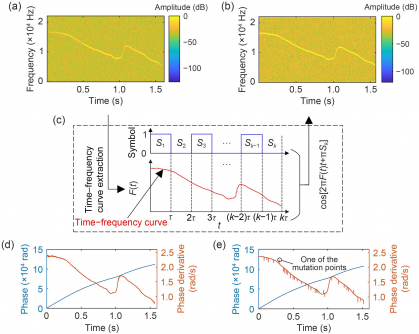BREAKING NEWS: Researchers have just unveiled a revolutionary method for recognizing underwater communication signals that mimic dolphin whistles, marking a significant leap in maritime technology. This urgent development addresses the pressing challenges faced by traditional recognition methods in detecting covert underwater bionic camouflage communication signals (UBCCC), which are crucial for modern military confrontations.
The team, comprised of experts from Tianjin University and the Shenyang Institute of Automation under the Chinese Academy of Sciences, has developed a recognition method that harnesses the power of convolutional neural networks (CNN). Their innovative approach is designed to enhance the detection of sophisticated underwater signals, which exhibit high concealment and vulnerability to misclassification as natural background noise.
Traditional recognition methods have struggled with signals that mimic marine mammal calls, particularly due to their complex nature. The researchers’ methodology introduces three critical steps:
1. **Spatial Diversity Combining (SDC):** This technique combines signals from multiple hydrophones to mitigate fading caused by underwater multipath propagation, enhancing the main signal and reducing interference.
2. **Time-Frequency Spectrum Mask Filtering:** Utilizing a 2D image approach, the researchers filter out noise from the time-frequency spectrum, applying various techniques to extract clean whistle signals from challenging underwater environments.
3. **Phase Derivative Spectrum and CNN Recognition:** The extracted signals undergo a Hilbert transform to calculate their phase, generating a phase derivative scalogram image that serves as input for CNN recognition, achieving an impressive 90% accuracy in simulations.
In extensive tests conducted at Qingnian Lake, located near Tianjin University, the research team confirmed this method’s robust performance. At a distance of 150 meters with a signal-to-noise ratio (SNR) of 6.36 dB, they achieved a recognition accuracy of 81%—a result comparable to their simulations. The findings indicate that the method retains effectiveness even in complex underwater conditions, making it a game-changer for underwater communication.
This breakthrough is not just a technical advancement; it holds profound implications for military operations, marine research, and environmental monitoring. As nations increasingly rely on stealthy underwater communication methods, this research positions China at the forefront of maritime technology.
The details of the study, titled “Recognition method for underwater communication signals that mimic dolphin whistles using phase-shifting modulation,” were published in a recent open-access paper authored by prominent researchers including Qingwang YAO, Jiajia JIANG, and Xiaolong YU.
As military and environmental applications of this technology expand, experts suggest that this new method could redefine how underwater signals are recognized and utilized, paving the way for enhanced communication strategies in challenging acoustic environments.
Stay tuned for further updates as this story develops. The full text of the research paper is available at [https://doi.org/10.1631/FITEE.2400572](https://doi.org/10.1631/FITEE.2400572).







